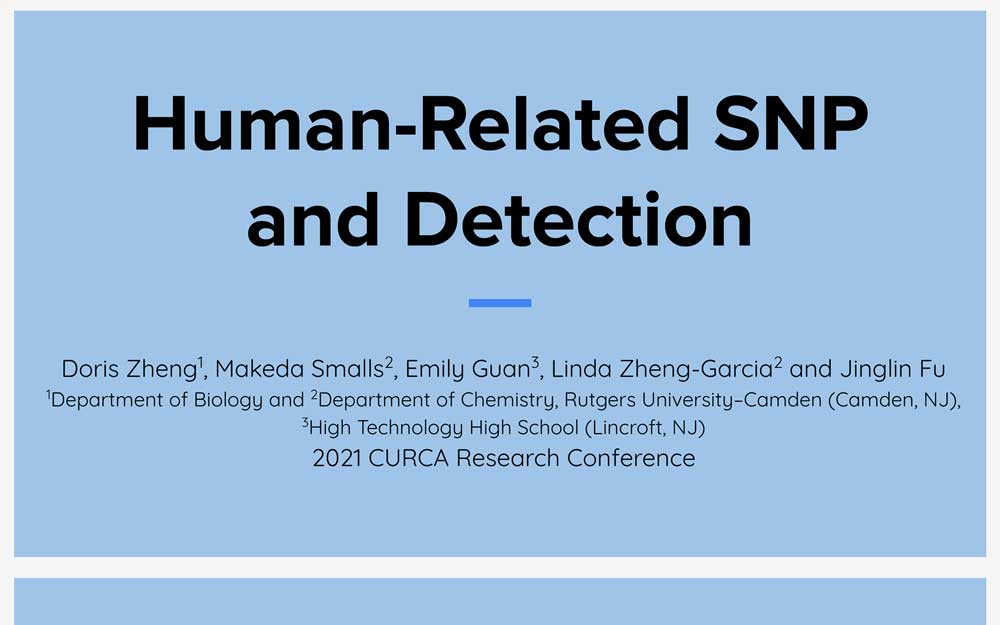Emily Guan (High Technology High School Student), Makeda Smalls ’21, Doris Zheng ’21, and Linda Zheng-Garcia ‘21
Majors: Chemistry (Makeda and Linda), Biology (Doris)
Minors: Business Administration and Chemistry (Doris)
Affiliations: Delta Phi Epsilon Sorority, Omicron Delta Kappa, Honors College (Doris)
Faculty Mentor: Dr. Jinglin Fu, Associate Professor of Chemistry
Abstract
Single- nucleotide polymorphisms (SNP) are a common occurrence in the human population. It describes a substitution of a single nucleotide at a particular position within a genome present in at least 1% of the population. Though protein coding is sensitive to mutation, SNPs may not always lead to amino acid variations. Regardless, detecting SNPs are crucial to predict an individual’s response to toxins, drugs, and even predict risk of pathogenesis. To detect SNPs, primers and amplicons are derived from the human genome through GenBank, the NIH genetic sequence database. Competitive hairpin are then developed for computational SNP detection. The hybridization of various nucleic acids within the competitive hairpin model will allow for optimization of experimental conditions and the recognition of SNP mutations. This process is demonstrated through the detection of Apo-ε4, a C/T transition substitution of the gene coding for apolipoprotein E (APOE). This mutation, while associated with higher levels of vitamin D, appear to correlate with atherosclerosis, Alzheimer’s, sleep apnea, impaired cognitive function, and many other disorders. SNP detection of this gene may prove beneficial to the monitoring of individuals with this mutation. Computational models of SNP detection are invaluable in ensuring successful translation of SNP detection in an experimental model.

